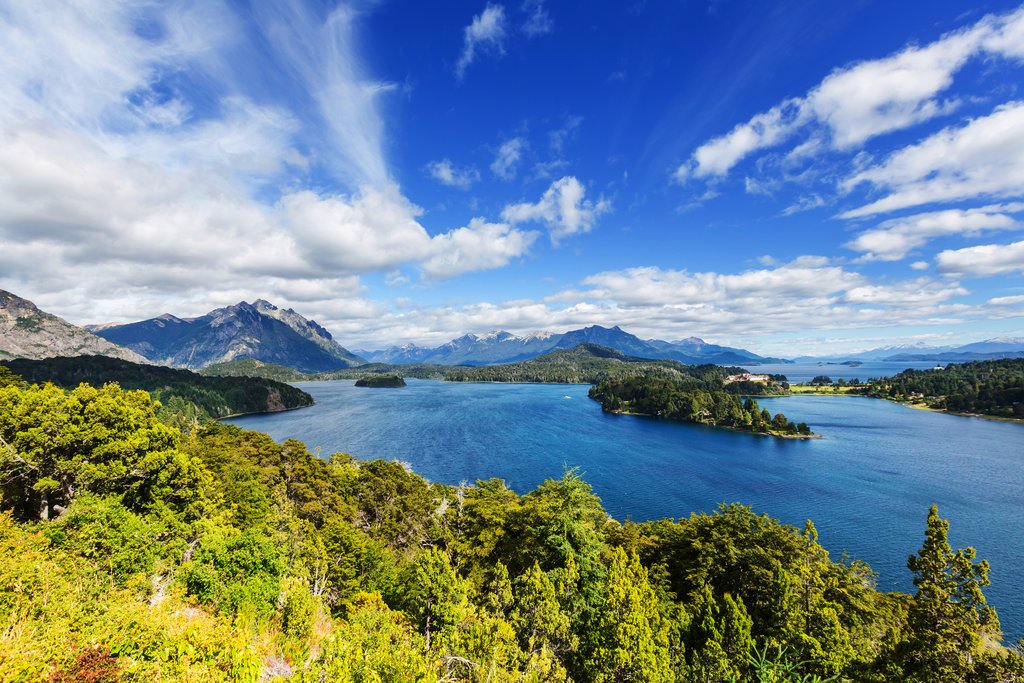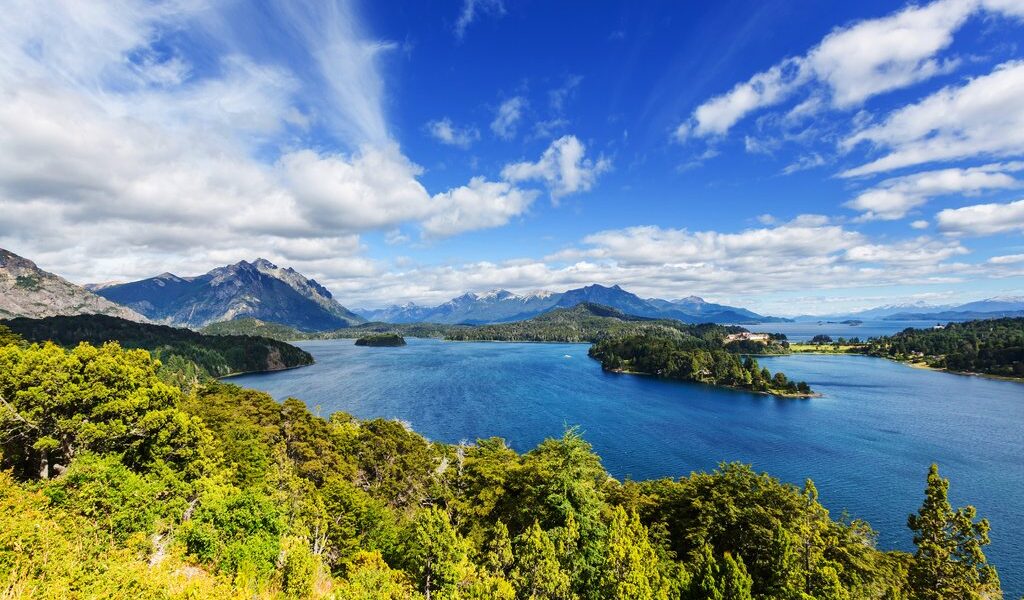
February is the last full month of Argentina’s high season with longish days of summer—perfect for outdoor adventures in Patagonia and escaping the heat at Atlantic beaches. Despite peak crowds and prices, this is a great time to visit. Let this monthly guide help you find the best places to visit and things to do.
Argentina in February: A Comprehensive Travel Guide
Weather in Argentina During February
February presents a fantastic opportunity to discover the diverse landscapes of Argentina, a country blessed with a wide range of climatic zones. The Southern Hemisphere summer is in full swing, bringing warmth and sunshine to many regions. However, it’s essential to be aware of the variations in weather across the country, which can significantly impact your travel plans.
For many international travelers, the gateway to Argentina is Buenos Aires, a vibrant metropolis that warrants several days of exploration. In February, Buenos Aires experiences typical summer conditions, characterized by heat and humidity. Daytime temperatures frequently climb into the 80s Fahrenheit, while nighttime temperatures offer a slight respite in the 60s. As you venture further north towards the northeastern border, the heat and humidity intensify, making the coastal areas an appealing escape.
Many travelers choose to leave the city behind and seek refuge on the Atlantic coast, where they can revel in milder temperatures and refreshing ocean breezes. The coastal towns provide a welcome contrast to the urban heat, offering opportunities for relaxation and water activities.
Meanwhile, the Andean desert, particularly near Salta, witnesses an increase in rainfall during this period. However, the rain usually comes in the form of short, intense showers, rather than prolonged downpours. These brief bursts of rain can add a dramatic touch to the already stunning desert landscapes.
For those with Patagonia on their itinerary, February is generally considered one of the most favorable months to visit. While the region is known for its summer winds and unpredictable weather patterns, which can range from warm sunshine to drizzle, rain, or even sleet, before quickly reverting to sunshine, the conditions are often quite pleasant. This ever-changing weather, while seemingly erratic, contributes to Patagonia’s unique charm and allure. Weather here is famously unpredictable with distinct microclimates. Expect average high temperatures to hover around the 60s Fahrenheit, making it ideal for outdoor pursuits in destinations such as Bariloche, El Chalten, and Ushuaia. Regardless of your chosen destination within Argentina, it’s always prudent to pack layers of clothing and outdoor gear suitable for both rain and wind to ensure your comfort and preparedness.
Crowds and Costs in Argentina in February
February is undeniably a popular time to visit Argentina, drawing in travelers eager to embrace outdoor adventures and unwind on its beautiful beaches. If your travel aspirations include destinations like Patagonia and the Atlantic coast, be prepared for larger crowds and elevated prices. To secure the best deals on accommodations and flights, and to guarantee availability, especially in areas with limited lodging options such as El Calafate, El Chalten, and the Lake District, it is crucial to make your bookings well in advance.
Buenos Aires presents a notable exception to this trend. Due to the departure of locals for holidays and summer weekends, hotel prices in the capital tend to be more competitive during February, offering a potential advantage for budget-conscious travelers.
Exploring Argentina: Where to Go in February
Buenos Aires serves as the primary entry point for most travelers, acting as a central hub for exploring the vast expanse of Argentina. Given the geographical dispersion of the country’s major attractions, domestic flights are often the most efficient mode of transportation. While these flights can be relatively expensive, keep an eye out for emerging budget airlines in Argentina, such as FlyBondi, which can provide more affordable options for spontaneous side trips.
With the entire country accessible and welcoming to travelers during this time of year, the possibilities for exploration are seemingly endless. However, it is generally advisable to avoid the humid northern regions and instead focus on the enticing beaches, pristine lakes, and expansive vistas of Patagonia.
Ushuaia, the world’s southernmost city, is an excellent choice for a February visit. It serves as a gateway to secluded hiking trails in the surrounding mountains and offers captivating boat excursions to observe sea lion and penguin colonies, as well as the iconic lighthouse in the Strait of Magellan. Furthermore, Ushuaia is a cultural center with superb seafood restaurants and fascinating museums dedicated to maritime history.
For beach lovers, Cariló, an upscale coastal town favored by locals, is conveniently located within a four-hour drive from Buenos Aires. Villa Gesell is another nearby option, boasting verdant forested parks, well-maintained golf courses, historic fishing piers, and an elevated wooden boardwalk that extends for a mile along the coastline. Further south, Mar del Plata entices visitors with its vibrant cultural scene, especially during the summer months.
Argentina: Activities and Attractions
February presents ideal weather conditions for a wide array of outdoor activities in Patagonia, including trekking, biking, camping, rafting, and wildlife viewing. These activities can be enjoyed as day trips, allowing you to immerse yourself in the region’s natural beauty.
For those seeking a more immersive experience, Los Glaciares National Park offers thousands of square miles of pristine wilderness and numerous guided trekking opportunities. The four-day Huemul Circuit, gaining popularity among experienced adventurers, involves camping overnight and navigating challenging terrain.
While the wine region of Mendoza experiences high temperatures in February, visitors can find respite by embarking on a white-water rafting adventure on the Rio Mendoza, located just outside the town center. The Iguazu Falls also provide a refreshing escape from the heat, with thrilling speedboat excursions that take you directly into the thundering cascades, ensuring a thorough soaking.
If you don’t mind the city’s heat, visitors to Buenos Aires can take advantage of the relative tranquility that February offers. During the hottest part of the day, consider exploring El Zanjón de Granados, a captivating museum located in the subterranean passageways beneath the San Miguel neighborhood. As evening approaches and temperatures cool, you can enjoy an al fresco dinner or a leisurely bike ride around the city. For a unique experience, try to uncover one of the city’s elusive speakeasies. These hidden bars require a bit of investigation and local guidance to locate, but once inside, you’ll be rewarded with expertly crafted cocktails in an unexpected setting, such as an unmarked flower shop.
February Events in Argentina
Argentina comes alive in February with a vibrant array of festivals and events, providing visitors with unique cultural experiences:
**Carnival in Gualeguaychú:** Throughout January and February, the town of Gualeguaychu hosts Argentina’s most anticipated carnival, renowned for its elaborate costumes, energetic dancers, and impressive floats. Rivaling the famous Rio carnival, this celebration spans nine Saturdays, offering ample opportunities to participate. The festivities are equally lively in Corrientes, as well as Montevideo, the capital of Uruguay.
**Apples National Festival:** Each year, the residents of Río Negro Valley (with General Roca as the main venue) come together to celebrate the apple, a beloved fruit that holds a special place in their culture.
**Buenos Aires Tango Festival:** Immerse yourself in the passionate world of tango at the annual Buenos Aires Tango Festival, held every February. Enjoy traditional dance performances throughout the city’s streets and take advantage of free beginner lessons to join in the fun.
**Festival Nacional del Lúpulo:** Beer enthusiasts will relish El Bolsón’s hop festival, a tribute to the essential ingredient in artisanal craft beers. The festival features musical performances, activities, food vendors, and, of course, a wide selection of beer tastings.
This adventurous two-week journey showcases the best of Argentina, combining thrilling outdoor activities and fascinating wildlife encounters. The itinerary includes visits to two major cities (Buenos Aires and Ushuaia), a stunning peninsula, and two national parks renowned for their glaciers and hiking trails. Additionally, you’ll have the opportunity to go whale watching, snorkel with sea lions, and visit South America’s largest Magellanic Penguin colony for memorable photo opportunities.
This active trip highlights two UNESCO World Heritage-listed parks in South America, known for their breathtaking landscapes. Begin your journey in Argentine Patagonia, spending several days in Los Glaciares National Park, home to 13 major glaciers and the iconic Mt. Fitz Roy. Afterwards, venture into Torres del Paine National Park in Chilean Patagonia, where you’ll discover snow-capped peaks, cascading waterfalls, and turquoise lakes. The adventure begins with a taste of big-city culture in Buenos Aires.
**Argentina in January**
**Argentina in March**
**Best Time to Visit Argentina**
**Top Highlights of Argentina (and How to Do Them Differently)**
B-59

